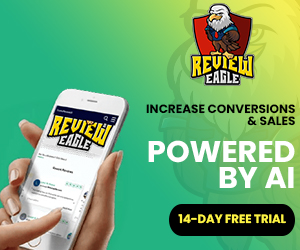Are your website visitors seemingly abducted by aliens, lost in the vast abyss of the internet? It’s a frustrating feeling, knowing that your carefully crafted content and products are not getting the attention they deserve. But fear not, because there is a powerful solution that can rescue your websites from this otherworldly predicament – retargeting strategies. In today’s digital age, where attention spans are shorter than ever, retargeting has quickly become a buzzword among marketers and website owners. It’s a technique that allows you to reconnect with users who have previously visited your website but left without taking any action. Think of it as a way to bring back those lost visitors and convert them into loyal customers.
So, how exactly does retargeting work? Imagine this: someone lands on your website and browses through your products or services, but for some reason, they navigate away without making a purchase. The next thing they know, ads from your website start appearing on their favorite social media platforms, reminding them of what they left behind. It’s like magic – or rather, it’s the power of retargeting. With just a few lines of code and the right tools, you can track these lost visitors and strategically display your ads to them as they browse the internet. It’s a subtle yet highly effective way to stay top-of-mind and persuade them to come back and complete their purchase. By harnessing the power of retargeting, you can turn lost opportunities into sales and enhance the overall performance of your websites. In this blog post, we will delve into the world of retargeting and explore the strategies that can help you rescue your websites from the clutches of alien abduction. We will uncover the key principles behind successful retargeting campaigns and provide you with actionable steps to implement these strategies on your own. So, buckle up and get ready to bring your websites back from the unknown with the power of retargeting!
Why do Aliens Abduct Website Visitors
Alien abductions have long been a topic of fascination and speculation. But did you know that aliens could be visiting your website? Yes, you read that right. While it may not be extraterrestrial beings behind it, the phenomenon of website visitors mysteriously disappearing is all too real. So, why do “aliens” abduct website visitors?
While it is one of multiple theories that Aliens are behind these website visitor abductions, there are proven statistics that over 90% of web visitors disappear on their first visit to your website without making a purchase, contacting you, or booking an appointment. Aliens or something else behind these statistics, we can not be sure – but the facts remain that re-engaging these abducted website travelers is crucial to maximizing your business potential.
The answer lies in the concept of retargeting. Retargeting is a powerful marketing strategy that allows you to reach out to visitors who have previously interacted with your website. By using tracking pixels and cookies, you can track these visitors as they navigate the web and present them with targeted ads.
But why would you want to retarget these visitors? Well, research has shown that most people don’t make a purchase or convert on their first visit to a website. In fact, it takes multiple touchpoints and interactions before a visitor is ready to take action. By retargeting these “abducted” visitors, you can remind them of your brand, products, or services, and increase the likelihood of conversion.
Retargeting also allows you to tailor your messaging to specific segments of your audience. For example, if a visitor abandoned their shopping cart, you can show them ads with a special discount or offer to entice them to complete their purchase. This level of personalization can greatly improve the effectiveness of your marketing campaigns.
So, the next time you notice a sudden drop in website visitors, don’t panic and start looking for aliens. Instead, harness the power of retargeting to bring them back and rescue your website from the clutches of abandonment. With the right strategies in place, you can turn those “abducted” visitors into loyal customers.
The Importance of Retargeting in the Digital Age
Retargeting has become an integral part of digital marketing strategies in the modern age. With the rise of online advertising and the increasing competition for consumer attention, retargeting offers a powerful solution for businesses to reconnect with their potential customers.
One of the key benefits of retargeting is its ability to reach out to users who have shown interest in a product or service. By utilizing cookies and tracking pixels, marketers can track user behavior and display targeted ads to those who have previously visited their website. This personalized approach increases the chances of converting leads into customers.
Moreover, retargeting allows businesses to stay top of mind with their audience. By displaying relevant ads on various platforms and websites, companies can remind potential customers about their offerings, even after they have left the website. This consistent exposure helps to build brand awareness and increase the likelihood of conversions.
Another advantage of retargeting is its cost-effectiveness. Instead of spending resources on broad advertising campaigns, businesses can focus their efforts on reaching out to users who have already displayed interest. This targeted approach ensures a higher return on investment and allows businesses to allocate their budget more efficiently.
In conclusion, retargeting is an essential tool in the digital age. Its ability to reconnect with potential customers, increase brand awareness, and optimize advertising budgets make it a valuable strategy for businesses of all sizes. By harnessing the power of retargeting, companies can rescue their websites from alien abduction and drive success in the competitive online landscape.
Understanding How Retargeting Works
Retargeting is a powerful marketing strategy that can help rescue your websites from alien abduction. But how does it actually work? Let’s dive into understanding the mechanics behind retargeting.
Retargeting, also known as remarketing, is a technique used by marketers to reach out to users who have previously visited their website. It works by placing a small piece of code, called a pixel, on your website. This pixel tracks the actions of your visitors, such as the pages they viewed or the products they added to their cart.
Once the pixel has collected this data, it allows you to target those visitors with personalized ads as they browse other websites or social media platforms. This means that even after leaving your website, your brand will follow them wherever they go online, increasing the chances of bringing them back to complete a purchase.
Retargeting works by leveraging the power of familiarity and reminding users about their interest in your products or services. By showing them relevant ads, you stay top of mind and can capitalize on their previous engagement.
To make the most out of retargeting, it’s essential to segment your audience and create tailored campaigns. By analyzing the data collected by the pixel, you can identify specific user behaviors and preferences, allowing you to create personalized ads that resonate with each segment.
In conclusion, retargeting is a valuable tool for rescuing your website from alien abduction. By implementing a well-crafted retargeting strategy, you can increase conversions, improve brand awareness, and bring back lost visitors. So, don’t let your hard-earned website traffic slip away – engage your audience with retargeting and watch your results soar.
Setting Up Your Retargeting Campaign
Setting Up Your Retargeting Campaign
Retargeting is a powerful strategy that can rescue your websites from alien abduction. By utilizing retargeting, you can target those visitors who have shown an interest in your website but did not convert into customers. So, how do you set up an effective retargeting campaign?
First, you need to choose the right retargeting platform. There are several popular platforms available, such as Google Ads, Facebook Ads, and AdRoll. Consider your target audience and the platforms they are most likely to use.
Next, install the retargeting pixel on your website. This pixel will track the actions of your website visitors and allow you to display targeted ads to them later. Simply copy and paste the pixel code provided by your retargeting platform into your website’s header.
Now, it’s time to segment your audience. Divide your website visitors into different groups based on their behavior and interests. This will help you create personalized ads that resonate with each segment.
Craft compelling ad creatives. Use eye-catching visuals, persuasive copy, and strong calls-to-action to entice your audience to take action. Experiment with different ad formats and messaging to see what works best for your target audience.
Finally, monitor and optimize your retargeting campaign. Track the performance of your ads and make adjustments as needed. Test different targeting options, ad placements, and messaging to maximize your campaign’s effectiveness.
Setting up a successful retargeting campaign requires careful planning and execution. By following these steps, you can maximize your website’s conversion rates and rescue it from the clutches of alien abduction.
Choosing the Right Platforms for Your Ads
When it comes to running ads for your business, choosing the right platforms is crucial. With so many options available, it can be overwhelming to determine which ones will yield the best results. However, by considering your target audience, budget, and advertising goals, you can make informed decisions to maximize your ad campaign’s success.
One popular advertising strategy is retargeting, which focuses on reaching users who have already shown interest in your brand. By displaying your ads to these individuals across various platforms, you can effectively remind them about your products or services and encourage them to take action.
To implement retargeting successfully, it’s essential to select the platforms that align with your target audience. For example, if your audience primarily uses social media, platforms like Facebook and Instagram can be highly effective. On the other hand, if you are targeting professionals or businesses, LinkedIn might be a better choice.
Consider your budget and the cost of advertising on each platform. Some platforms may offer more affordable options for small businesses, while others may require a larger investment for maximum reach. It’s important to find a balance between cost and potential return on investment.
Furthermore, evaluate the features and capabilities of each platform. Some platforms may provide advanced targeting options, while others may offer better ad placement opportunities. By understanding the unique benefits of each platform, you can tailor your ad campaign to suit your specific goals.
In conclusion, choosing the right platforms for your ads is crucial for a successful advertising campaign. By considering your target audience, budget, and advertising goals, you can make informed decisions and maximize your ad’s reach and impact. Remember to use retargeting strategies to engage with users who have already shown interest in your brand. With careful planning and execution, your ads can effectively reach your desired audience and drive conversions.
Crafting Compelling Retargeting Ads
Crafting Compelling Retargeting Ads
Retargeting has become an essential strategy for businesses looking to maximize their online advertising efforts. By targeting users who have already shown interest in their products or services, companies can significantly increase their chances of conversion. Crafting compelling retargeting ads requires a thoughtful approach and strategic thinking.
First and foremost, it’s crucial to understand your target audience. By diving deep into your analytics, you can gain insights into their demographics, interests, and online behavior. Armed with this information, you can tailor your retargeting ads to resonate with your audience on a personal level.
Next, focus on creating attention-grabbing visuals. Eye-catching images or videos are more likely to capture your audience’s attention and entice them to click on your ad. Remember to keep your branding consistent to maintain brand recognition.
In addition to visuals, compelling copy is also key. Keep your messages concise and impactful. Highlight the benefits of your products or services, and create a sense of urgency to prompt action. Use persuasive language that speaks directly to your audience’s pain points and offers a solution.
Furthermore, segmenting your audience can enhance the effectiveness of your retargeting ads. By categorizing users based on their browsing behavior or stage in the sales funnel, you can deliver highly relevant ads that speak directly to their needs and interests. This personalized approach can significantly improve your conversion rates.
Lastly, continually test and optimize your retargeting ads. Monitor their performance, analyze the data, and make necessary adjustments. A/B testing different ad variations can help you determine which elements resonate best with your audience and drive the most conversions.
Crafting compelling retargeting ads is a powerful way to capture the attention of potential customers who have shown interest in your brand. With careful planning, attention to detail, and continuous optimization, your retargeting ads can become a valuable tool for driving conversions and increasing your online advertising ROI.
Segmenting Your Audience for Maximum Impact
Segmenting Your Audience for Maximum Impact
To maximize the impact of your retargeting strategies, it is essential to segment your audience effectively. By dividing your audience into distinct groups based on their behavior, demographics, or interests, you can tailor your retargeting messages to address their specific needs and preferences.
Segmentation allows you to deliver more personalized and relevant ads to your audience, increasing the likelihood of conversions. For example, if you have an e-commerce website selling clothing, segmenting your audience based on their past purchases or browsing history can help you create retargeting campaigns that showcase products they are more likely to be interested in.
Demographic segmentation is another powerful way to segment your audience. By categorizing your audience based on factors such as age, gender, or location, you can customize your retargeting messages to resonate with each demographic group. This approach can be especially effective if you are targeting a diverse audience with different needs and preferences.
Behavioral segmentation is also crucial for maximizing the impact of your retargeting efforts. By analyzing how your audience interacts with your website or engages with your content, you can identify patterns and target specific behaviors with tailored retargeting campaigns. For instance, if a user has abandoned their shopping cart, you can retarget them with a reminder or an offer to entice them to complete their purchase.
In conclusion, segmenting your audience is a fundamental strategy for maximizing the impact of your retargeting efforts. By understanding your audience’s behavior, interests, and demographics, you can create personalized and relevant retargeting campaigns that drive conversions and boost your overall marketing success.
Implementing Dynamic Retargeting for Personalized Ads
Implementing Dynamic Retargeting for Personalized Ads
Retargeting has become an essential strategy for marketers to reach out to potential customers who have shown interest in their products or services. By utilizing dynamic retargeting, businesses can take their advertising efforts to the next level by delivering personalized ads to engage and convert prospects.
Dynamic retargeting involves tailoring advertisements based on a user’s previous interactions with a website. This technique allows marketers to display specific products or services that are relevant to each individual user, increasing the chances of conversion.
To implement dynamic retargeting effectively, businesses need to utilize tracking pixels or cookies to gather user data. By monitoring users’ browsing behavior, marketers can then create personalized ad campaigns that align with their interests and preferences.
Segmentation plays a crucial role in dynamic retargeting. By dividing users into different segments based on their browsing behavior, marketers can create customized ad experiences for each group. This level of personalization can significantly enhance the user experience and drive higher engagement and conversions.
Furthermore, dynamic retargeting allows businesses to optimize their advertising spend by focusing on users who have already shown interest in their offerings. Instead of wasting resources on broad targeting, they can allocate their budget towards re-engaging potential customers who are more likely to convert.
In conclusion, implementing dynamic retargeting is an effective strategy for delivering personalized ads to potential customers. By utilizing tracking pixels, segmentation, and personalized ad campaigns, businesses can increase their chances of engaging and converting prospects. Embracing dynamic retargeting can ultimately lead to improved ROI and a stronger brand presence in the digital landscape.
Monitoring and Optimizing Your Retargeting Campaign
Monitoring and optimizing your retargeting campaign is crucial for achieving the desired results. With powerful retargeting strategies, you can rescue your websites from alien abduction and boost your conversions.
To start, it is essential to track and analyze the performance of your retargeting campaign. Use reliable analytics tools to monitor key metrics such as click-through rates, conversion rates, and cost per acquisition. By understanding the data, you can identify areas that need improvement and make informed decisions.
Segmentation plays a vital role in optimizing your retargeting efforts. Divide your audience into different segments based on their behavior, demographics, or interests. This allows you to tailor your ads and messages to specific groups, increasing the chances of engagement and conversions.
Another important aspect to consider is ad frequency. Bombarding your audience with too many ads can lead to ad fatigue and a negative user experience. Find the right balance and frequency that keeps your brand top of mind without overwhelming your potential customers.
Don’t forget to test and experiment with different ad formats, creatives, and ad placements. A/B testing can help you identify the most effective strategies and refine your retargeting campaign for better results.
Furthermore, make sure your landing pages are optimized for conversions. A seamless user experience, clear call-to-action, and relevant content can significantly improve your campaign’s performance.
In conclusion, monitoring and optimizing your retargeting campaign is essential for maximizing your ROI. By tracking metrics, segmenting your audience, and continuously testing and refining your strategies, you can rescue your websites from alien abduction and achieve your marketing goals.
Best Practices for Retargeting Success
Retargeting has become an essential tool for marketers looking to maximize their online advertising efforts. To ensure retargeting success, it is crucial to follow some best practices.
Firstly, segment your audience based on their behavior and interests. By understanding their preferences, you can create personalized retargeting campaigns that resonate with each segment. This targeted approach increases the chances of conversion and boosts overall ROI.
Secondly, choose the right platform for retargeting. There are various platforms available, each with its own strengths and weaknesses. Research and select the one that aligns with your goals and target audience.
Next, set a frequency cap to avoid overwhelming your audience with too many ads. Bombarding them with repetitive messages can lead to annoyance and ultimately, ad fatigue.
Another best practice is to optimize your ad creatives. Design visually appealing and attention-grabbing ads that compel users to take action. Use compelling copy, high-quality images, and clear call-to-actions to improve engagement.
Furthermore, continuously monitor and analyze your retargeting campaigns. Regularly review performance metrics and make data-driven optimizations. This allows you to identify what is working and what needs improvement, ultimately leading to better results.
In conclusion, implementing these best practices for retargeting can significantly enhance the effectiveness of your campaigns. By segmenting your audience, choosing the right platform, setting frequency caps, optimizing creatives, and monitoring performance, you can achieve retargeting success and maximize your advertising efforts.
Conclusion: Rescuing Your Websites with Retargeting
Retargeting is a game-changing advertising strategy that allows businesses to reach out to potential customers who have previously shown interest in their products or services. By utilizing the power of retargeting, businesses can unlock a whole new level of advertising potential.
One of the key benefits of retargeting is that it enables businesses to stay top-of-mind with their target audience. By displaying relevant ads to users who have already expressed interest in a particular product or service, businesses can increase brand awareness and keep their offerings front and center
Retargeting also helps businesses improve their conversion rates. By targeting users who are already familiar with a brand, businesses can present them with personalized, compelling offers that are more likely to lead to a sale. This highly targeted approach helps businesses maximize their advertising spend and increase their return on investment.
Another advantage of retargeting is that it allows businesses to engage with potential customers at different stages of the buying journey. Whether a user has abandoned their shopping cart or browsed a specific product page, retargeting ads can be tailored to address their specific needs and encourage them to take the desired action.
In conclusion, retargeting is a powerful advertising strategy that can unlock the full potential of reaching out to a highly engaged audience. By utilizing retargeting techniques, businesses can stay top-of-mind, improve conversion rates, and engage with potential customers at various stages of the buying journey. Incorporating retargeting into your advertising strategy can be a game-changer for your business.
Looking to advanced retargeting strategies to keep the 👽aliens 👽 away?
check out this 5X Retargeting 👽 Program for a careful step by step blueprint to retargeting success.









